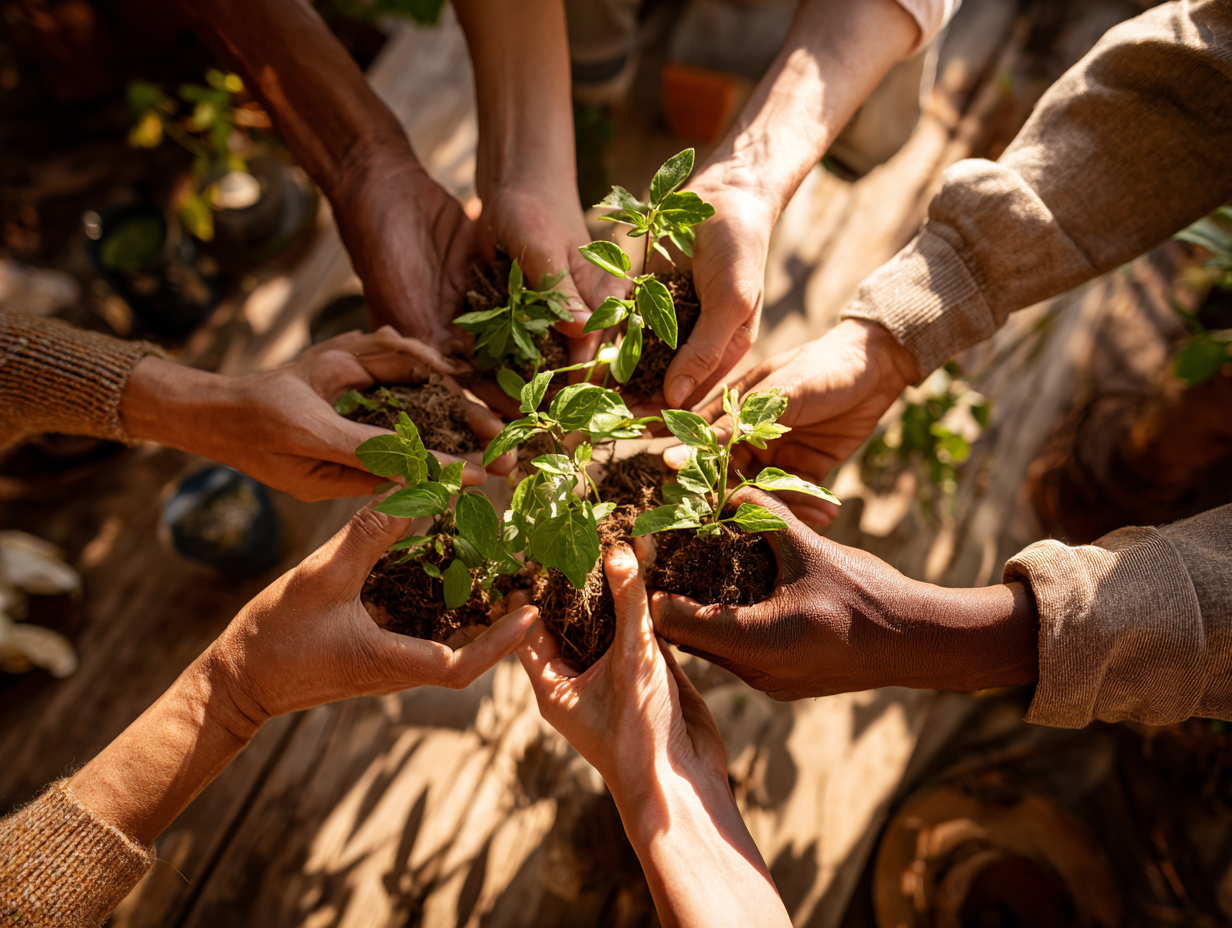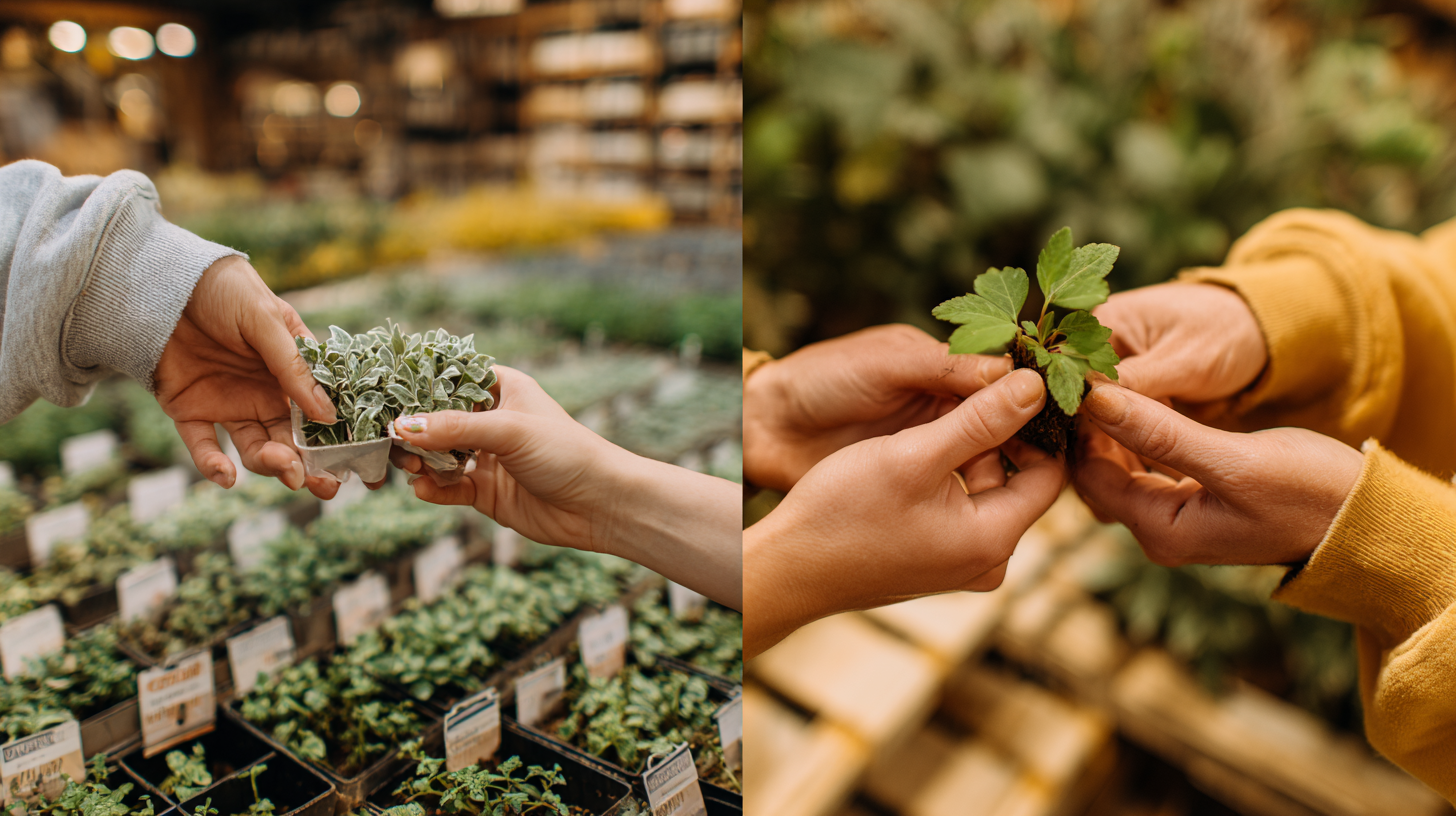Free Sustainable Plant Parenting Guide
Get our comprehensive guide to eco-friendly plant practices, community building, and sustainable collection growth.
Download Free GuidePlant trading isn't just about saving money (though you definitely will). It's about joining a movement that prioritizes community, sustainability, and the joy of sharing living things with people who understand your passion.
The Hidden Environmental Cost of Plant Buying
Every plant you buy new has an environmental footprint that extends far beyond the price tag. Understanding this impact helps us appreciate why plant trading is more than just a hobby – it's an environmentally conscious choice.
🏭 The Commercial Plant Production Chain:
🌱 The Plant Trading Alternative:
The Economic Impact: Beyond Personal Savings
While saving money is often what attracts people to plant trading, the economic benefits extend far beyond your personal plant budget:

💰 Personal Financial Benefits
- • Zero plant costs: Build collections without spending money
- • Shared resources: Split shipping, tools, and supplies
- • Knowledge sharing: Free expert advice prevents costly mistakes
- • Bulk opportunities: Group orders for rare plants
- • Insurance network: Replace lost plants through community
🏘️ Community Economic Impact
- • Local circulation: Money stays in the community
- • Small business support: Local growers over big box stores
- • Skill development: Members gain valuable horticultural knowledge
- • Reduced consumption: Less impulse buying, more intentional collecting
- • Social capital: Relationships that provide mutual support
Building Genuine Community Connections
Perhaps the most profound difference between buying and trading plants is the human connection factor. When you buy a plant, you complete a transaction. When you trade a plant, you begin a relationship.
🤝 What Plant Trading Relationships Look Like:
Ongoing Support:
- • Care advice for traded plants
- • Troubleshooting when plants struggle
- • Updates on how plants are thriving
- • Seasonal care reminders
Expanded Networks:
- • Introductions to other plant friends
- • Access to rare plant sources
- • Invitations to private plant groups
- • Local meetup notifications
📖 Real Trading Stories:
"I traded a pothos cutting with someone across the country. Two years later, we're best friends who vacation together. Our plants brought us together, but our shared values keep us connected."
- Jessica, Portland
"My trading group became my support system during a difficult time. When I was hospitalized, they cared for all my plants. That's not something you get from a garden center."
- Robert, Miami
"Through plant trading, I've learned Spanish from my Mexican trading partners and taught propagation techniques to newcomers. It's cultural exchange through plants."
- Maria, San Antonio
The Educational Advantage
When you buy a plant, you get a plant and maybe a care tag. When you trade with experienced growers, you get a living masterclass in horticulture.
🛒 What You Get When Buying:
- • Basic care instructions (often generic)
- • Plant as-is with no history
- • No ongoing support
- • Limited variety (commercial selections)
- • Standardized growing conditions
🌱 What You Get When Trading:
- • Specific care tips from experienced grower
- • Plant's complete history and parentage
- • Ongoing mentorship and problem-solving
- • Access to rare and unusual varieties
- • Real-world growing condition insights
Quality and Plant Health Advantages
Plants from dedicated home growers often arrive in better condition than mass-produced plants. Here's why:
Individual Attention
Home growers monitor each plant personally, catching issues early and providing targeted care.
No Commercial Stress
Plants aren't subjected to shipping stress, warehouse conditions, or retail environment challenges.
Optimal Timing
Cuttings are taken at the perfect time for rooting success, not based on commercial schedules.
Love and Care
Plants are shared by people who genuinely care about their success in your home.
Cultural and Social Impact
Plant trading communities represent a return to older values of sharing, cooperation, and mutual aid that modern commerce often lacks:
🌍 Broader Social Benefits:
Community Resilience:
- • Local food security through edible plant sharing
- • Neighborhood beautification projects
- • Skill sharing beyond just plants
- • Support networks during difficult times
Cultural Exchange:
- • Sharing heritage varieties and family plants
- • Learning traditional plant uses
- • Connecting across generational divides
- • Building bridges between communities
Making the Transition: From Buyer to Trader
Ready to experience the benefits of plant trading? Here's how to make the transition gradually and successfully:
Phase 1: Build Your Trading Foundation
- • Start propagating: Turn your current plants into trade stock
- • Join communities: Find local and online plant trading groups
- • Learn the culture: Observe before participating, understand etiquette
- • Build reputation: Start with small, successful trades
Phase 2: Reduce Commercial Purchasing
- • Make a wishlist: Focus trading efforts on specific goals
- • Resist impulse buys: Ask the community before purchasing
- • Support ethical sources: When buying, choose local growers
- • Share your journey: Document your transition experience
Phase 3: Become a Community Leader
- • Mentor newcomers: Help others make the same transition
- • Organize events: Facilitate local plant swaps and meetups
- • Share knowledge: Teach propagation and care techniques
- • Advocate for sustainability: Promote trading benefits to others
The Ripple Effect
When you choose trading over buying, you're not just making a personal choice – you're contributing to a larger movement toward sustainability, community, and conscious consumption. Every trade sends ripples through the community, inspiring others and strengthening the network.
🌊 Your Impact Multiplies:
- • Each trade you make influences others to try trading
- • Your propagation skills inspire friends to start their own
- • Your success stories encourage sustainable practices
- • Your community involvement strengthens local networks
- • Your mentorship creates the next generation of traders
The choice between buying and trading plants represents a fundamental choice about the kind of world we want to live in. Do we want anonymous transactions or meaningful relationships? Mass production or personal care? Environmental extraction or regenerative practices?
Plant trading offers us a way to grow our collections while growing our communities, to satisfy our plant cravings while satisfying our need for connection, and to create abundance while creating a better world.
Join the Sustainable Plant Community
Connect with like-minded plant parents who prioritize community, sustainability, and the joy of sharing. Build your collection while building a better world.
Join Our Sustainable Community